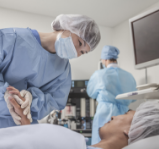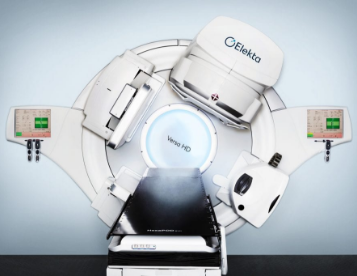Nasopharyngeal carcinoma (NPC), is known as nose cancer, develops in the nasopharynx. The nasopharynx is located behind the soft palate and above the nose. The Eustachian tube connects the inner ear to the middle ear.
As a result, a tumour in the nasopharynx may obstruct this tube, causing hearing loss.

Nasopharyngeal carcinoma (NPC), is known as nose cancer, develops in the nasopharynx. The nasopharynx is located behind the soft palate and above the nose. The Eustachian tube connects the inner ear to the middle ear.
As a result, a tumour in the nasopharynx may obstruct this tube, causing hearing loss.
It is estimated that Nasopharyngeal Carcinoma (NPC) is the third most common cancer among Malaysian men and the fourth most common cancer among all Malaysians.
There still needs to be a clear explanation for the causes of NPC. Certain risk factors contribute to the development of the disease:
Nasopharyngeal carcinoma can be present with no symptoms in its early stages. The following are possible symptoms of nasopharyngeal carcinoma:
A lump in your neck caused by a swollen lymph node
Blood in your saliva or phlegm
Bloody Discharge From Your Nose
Nasal congestion
Hearing loss or tinnitus
Headaches, Facial Numbness, Double Vision
It is essential to obtain the right diagnosis and determine whether your cancer has spread to receive the most effective treatment. SJMC's team of experts works collaboratively to gather as much information as possible about your cancer so that we can determine the most appropriate course of treatment for you.

As part of the examination, the doctor will take a complete medical history, look inside the mouth and throat, and use mirrors and lights to examine hard-to-see areas of the head and neck.
.png)
An endoscope is a flexible, lighted tube used to examine the nasopharynx during an endoscopic examination. Biopsies will be performed on suspicious areas.

Depending on the location and extent of the tumour, imaging tests such as CT, MRI, or ultrasound may be required. Staging has also been accomplished using PET / CT scans. PET (Positron Emission Tomography) provides clear and detailed images of the body. The patient receives an injection of a glucose solution containing minimal radioactive material. The PET scanner will detect and display areas of the body where a radioactive substance is being used. It is common for cancerous cells to appear in places where glucose is being consumed by growing cells.
Since numerous treatment options are available for NPC, it is critical to have a skilled, multidisciplinary team.

SJMC offers the most advanced resources to treat patients with early or advanced NPC. Our multidisciplinary team includes ENT specialists, clinical oncologists, radiologists, and pathologists who work together to develop the most effective treatment plan.

Each patient is thoroughly informed about factors such as the stage and grade of the tumour and the various treatment options available. In addition, they are also informed about the possible side effects of each treatment. There are doctors here who can guide patients through the sometimes-complex choices posed by these factors.

A high cure rate can be achieved through early detection. Early symptoms of nasopharyngeal carcinoma may not always prompt you to seek medical attention. You should consult your physician if you notice any unusual or persistent changes in your body, such as hearing loss and blood in your sputum.

Nasopharyngeal carcinoma is not commonly treated with surgery. For patients with minor local relapses, surgery serves as a salvage treatment.

As a primary treatment for NPC, radiotherapy or radiation therapy remains the most effective method. In radiotherapy, cancer cells are destroyed by high-energy X-rays.

In conjunction with radiation therapy, chemotherapy is administered. Chemotherapy can enhance the effectiveness of radiation therapy when combined with the two treatments.
Chemotherapy after radiation therapy
When cancer cells remain in the body, the drug destroys them.
Chemotherapy after radiation therapy
To reduce the size of tumour prior to radiotherapy.
Chemotherapy during radiation therapy
Chemotherapy is also administered at certain intervals during course of radiation therapy to enhance effectiveness of radiotherapy.
Previously, radiation beams could not target tumours precisely, leading to the damage of healthy tissues during cancer treatment. Radiation therapy at SJMC is being carried into the 21st century using cutting-edge systems.

By combining three-dimensional imaging with innovative intensity-modulated radiation therapy, or IMRT, the Helical TomoTherapy system targets mainly the tumour while sparing the surrounding healthy tissues.

Using Varian TrueBeam STX technology, also known as RapidArc, Volumetric Arc Therapy (VMAT) delivers fast and accurate radiation treatment.
Patients can feel less alone with the support of the healthcare team and the quality of care can be improved. In addition, all of our patients have access to the Patient and Family Resource Center at the SJMC Cancer & Radiosurgery Centre, which offers a wide range of educational and support services, including:
![]() Oncology Nurse Educator
Oncology Nurse Educator
![]() Patient & Family Liaison Officer
Patient & Family Liaison Officer
![]() Counsellor
Counsellor
![]() Pain management specialists
Pain management specialists
![]() Cancer Careline
Cancer Careline
![]() Post-surgery Stoma Care
Post-surgery Stoma Care



Subang Jaya Medical Centre offers nasopharyngeal cancer services and technologies to provide patients with the most comprehensive care possible.
SJMC Cancer and Radiosurgery Centre is a comprehensive cancer centre recognised for its expertise and leadership in advanced cancer treatment. It is a one-stop cancer centre designed to provide patient-focused care in a comfortable and safe environment.
The contents of this publication are intended only as a guide and should not be construed as medical advice. You will need to consult your physician to determine which treatment option is best for you.
The centre’s doctors and staff members are committed to enhancing the well-being of every patient, both physically and mentally. Their objective is to provide all patients with the highest quality care. This is regardless of whether they seek prevention and screening services, receive treatment, or cope with a cancer diagnosis. It is pertinent to note that support groups and other services can provide emotional and psychological benefits that make many aspects of their daily lives easier.


